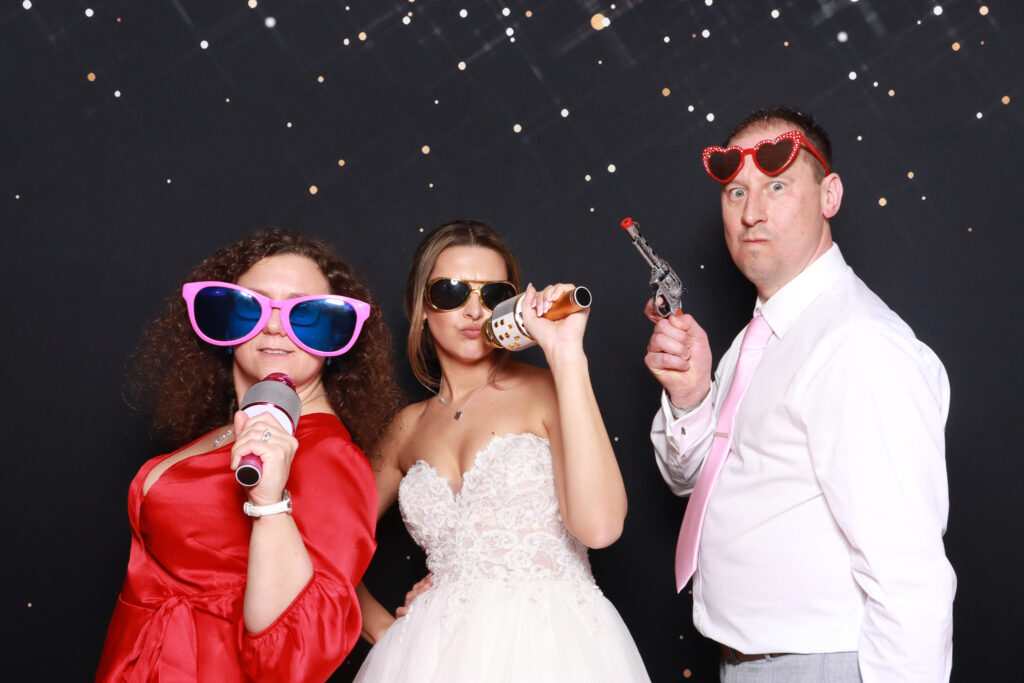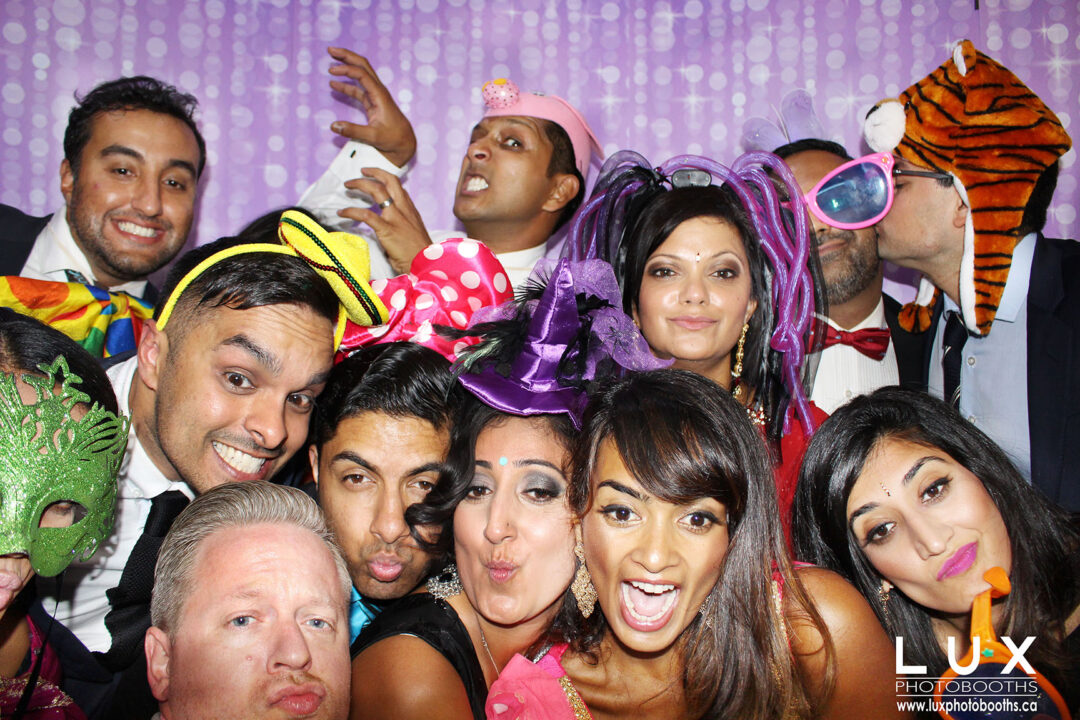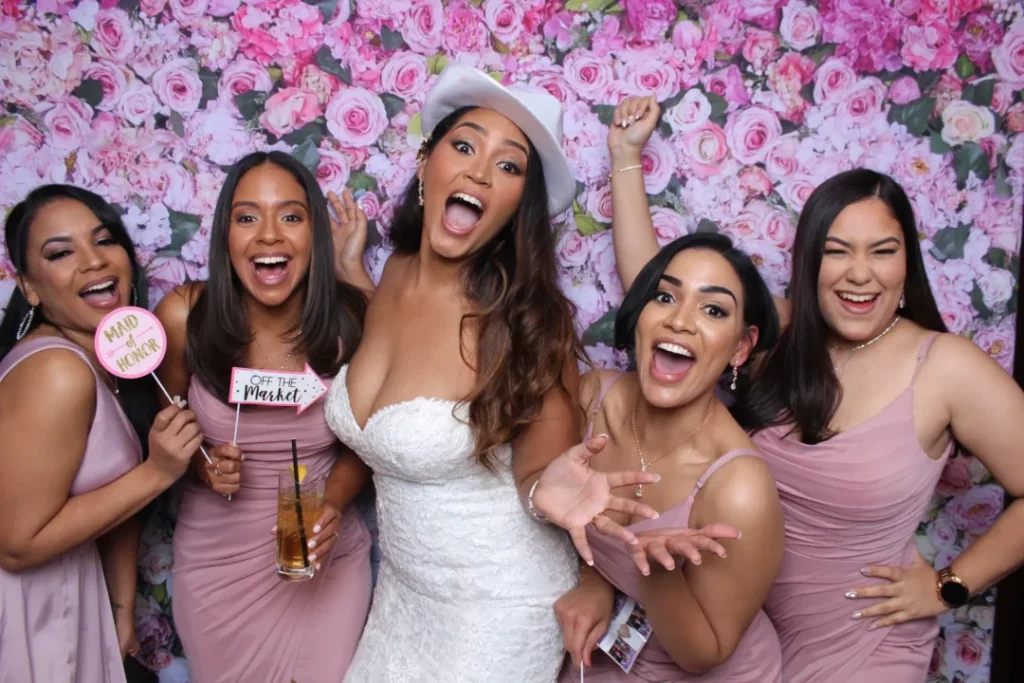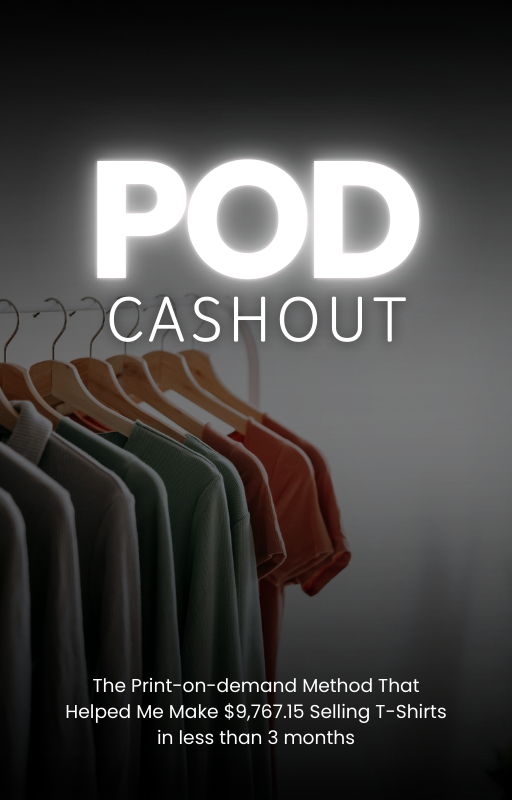If you’ve ever been to a wedding and seen that little corner where people are lining up with props, snapping goofy pics, and laughing way too hard—you’ve already seen the hustle in action. Wedding photo booth rentals aren’t just a fun extra anymore. They’re a full-blown business that can pull in real money on the side, even if you’re starting with a basic setup and zero experience.
And no, you don’t need to be a photographer or a tech expert to do this. You just need a clean setup, a plan that actually works, and a little confidence to book that first gig. Once you’re in, the gigs stack fast—because every happy couple knows someone else getting married soon.
This guide breaks down everything: how photo booth rentals took off, what kind of money people are making, what it costs to get started, and how to turn it into something that actually pays the bills. It’s not hype. People are already doing it—and making way more than just beer money.
Let’s get into how this all works and whether it’s something you should be jumping into.
Why Weddings For Your Photo Booth Business
Weddings are already money magnets. Everyone’s spending big—venues, flowers, dresses, DJs—and somewhere along the way, couples started looking for ways to make the day more fun and personal. That’s where photo booths snuck in. First it was just Polaroids and goofy props. Then came the sleek setups with ring lights, digital screens, custom backdrops, GIFs, and live social sharing. And boom—people started charging for it.
The cool part? You don’t need to be a pro photographer or tech wizard to pull this off. You’re not shooting high-pressure ceremony shots. You’re giving guests a good time and snapping pics while they’re laughing their heads off with feather boas and fake mustaches. It’s more about experience than perfection.
And here’s the wild part—some folks are pulling in $500 to $1,500 per event. If you’re working weddings on the weekend and maybe a corporate party here and there, you could realistically clear an extra $2K to $5K a month. That’s not fantasy—it’s already happening. This guy turned a simple photo printer into a six-figure cash machine, and another scaled his booth hustle to $400K a year.
It works because it’s low overhead, flexible, and easy to scale. You buy your gear once, reuse it like crazy, and every new wedding is another payout. No need to rent a studio or deal with inventory. Just show up, plug in, smile, snap, and cash out.
And if you’re already juggling other gigs, this can play nicely with your schedule. It’s like how this guy made $15K online without any special skills—sometimes the simplest hustles are the most slept on.
Weddings just happen to be the goldmine for this because the guest lists are packed, people are dressed up, and they want fun memories. And couples? They’ll drop the cash if your setup looks polished and makes their night more memorable.

Are Photo Booths in Demand or Just a Wedding Trend?
Short answer? Yeah—they’re still hot. Like, booked-out-months-in-advance hot. Especially for weddings, photo booth rentals are one of those things that couples didn’t know they needed…until they saw one at someone else’s wedding. Then suddenly it’s, “We have to have that at ours.”
People want something that adds fun without being cheesy or over-the-top. And booths hit that sweet spot. You’ve got guests of all ages lining up to take pics, printing keepsakes, and sharing stuff on Instagram while the couple’s off doing their serious photo shoot. It keeps the energy up and gives people something to do in between courses or dances.
And it’s not just weddings. These things are popping up at:
-
Corporate parties
-
Proms
-
Brand activations
-
Birthday parties
-
Baby showers
-
Quinceañeras
Pretty much anywhere people are dressed up and want memories.
So yeah, demand is still going strong—and honestly, it’s evolved. Now people want more than just a box with a curtain. They’re asking for:
-
Open-air booths
-
360-degree video setups
-
Glam filters (Kardashian-style smoothing, no shame)
-
Boomerangs and instant social sharing
-
Custom overlays and branding
If you’re just starting out, don’t let that scare you. You can begin simple and still clean up on bookings. As long as your setup looks good and works reliably, you’re golden. The wedding market is especially forgiving, because people care more about the fun and the memories than what camera you’re using behind the scenes.
This kind of demand is the reason you see so many folks turning this into a serious side hustle. It’s low-maintenance, high-margin, and taps into events where people are already spending big.
And if you’re wondering “Is the photo booth industry saturated?”—we’ll hit that soon. But spoiler: not if you’ve got even a little creativity and hustle in you.
Is Owning a Photo Booth Profitable, or Just Hype?
If you’re wondering whether buying a photo booth is actually worth the money, here’s the straight-up answer—it can absolutely pay for itself fast, and then some.
Let’s say you drop around $1,500 to $2,500 to get started. That covers your iPad, ring light, booth stand, backdrop, props, and a solid photo booth app. If you go big and include a high-quality printer, maybe you’re up around $3,000 total.
But here’s the kicker—most people charge $500 to $1,200 per event, especially for weddings. That means after just 3 to 5 events, your gear is fully paid off. Every gig after that? Profit.
You’re not burning money on supplies or inventory. Props are reusable. Most software is a flat rate. Your biggest ongoing costs are gas, maintenance, and maybe a few small upgrades.
The gear itself doesn’t have to be top-tier to start making money. This guy turned a regular photo printer into a $100K side hustle. And another hustler scaled a full-blown photo booth business to $400K a year. That’s not out of reach—it just takes smart branding, solid service, and being reliable.
The other piece of the puzzle is flexibility. You can work one gig a weekend, a few a month, or build a team and go full-time. You control the pace. If you’ve ever read about folks stacking up multiple streams like in this story, this is one that actually fits into a busy life.
So yeah—it’s worth investing in if you’re serious about making weekend money, working parties, and getting paid to watch people have fun.
How Much Money You Can Actually Make with a Photo Booth
Most side hustlers starting out with a basic photo booth setup can expect to make $500 to $1,000 per event. If you’re in a higher-end market or offer premium features—like 360 video booths, glam filters, or custom branding—you can charge up to $1,500 or more.
Do two weddings a month? That’s $1,000 to $3,000 right there. Do four? You’re at $2,000 to $6,000. And that’s just weekends.
Once people get the hang of it and start getting regular bookings, it’s not unusual to pull in $40K to $80K a year just from part-time work. Some full-timers who’ve scaled up with multiple booths or added event staff are pushing past six figures. No exaggeration.
There’s this guy who made $100K just from a photo printer side hustle. If he can do that with a printer, you can definitely hit those numbers with a full booth setup.
It stacks up well against other side hustles like cleaning gigs or delivery work, especially when you look at your hourly rate. One wedding can be a five-hour job that pays better than a full week of driving apps.
If you’re wondering what to charge to hit these numbers consistently, that’s coming up next. Ready for it? Call section 5.
What You Should Charge for a Wedding Photo Booth
Most people offering wedding photo booth rentals charge anywhere from $500 to $1,200+ per event. That range depends on how long you’re booked, how fancy your setup looks, and whether you offer extras like printed photos, custom backdrops, or premium filters.
If you’re just starting out, a clean base package might include:
-
3 hours of booth time
-
A standard backdrop
-
Fun props
-
Unlimited digital photos
-
Instant sharing by text or email
You could price that around $600 to $800, depending on your market. Don’t go too low just because you’re new—weddings are high-budget events, and couples are usually ready to pay for quality.
Now, if you’re offering printed photos, there are two ways to price that:
-
All-inclusive – Wrap unlimited prints into your main package and raise your rate by $100 to $200.
-
Per print pricing – Offer a set number of prints included (like 100), and then charge $1 to $3 per extra print if guests want more. This is where you make extra cash without doing extra work.
Just make sure your pricing feels simple and stress-free for the couple. Most people will go for bundled packages, especially if you make it feel like a good deal.

How Much Should I Charge per Photo If You Offer Prints
If you’re adding printed photos to your booth setup, there are two main ways to price them—and either one can bump your earnings without adding much work.
Option 1: Bundle prints into your main package
This is the easiest. Just say “includes unlimited prints” and bump your package price by $100 to $200. Most couples love the simplicity, and you get to cover your printing costs while pocketing the rest.
Option 2: Charge per print
This works better for free events or gigs where you offer photo prints as an upsell. A typical rate is:
- $2 to $3 per print
- Or $5 for two copies (one for the guest, one for a scrapbook)
You can also sell extra print bundles like “100 extra prints for $75” if you already include a limited amount.
Make sure your pricing is crystal clear before the event. And if you’re printing on-site, factor in the cost of photo paper and printer ribbon. It’s not a huge expense, but you don’t want it eating into your profits.
How to Start a Photobooth Rental Without Going Broke
You don’t need a fat savings account to start a wedding photo booth side hustle. You can launch lean, look legit, and still make real money.
Most people kick things off with a tablet-based setup. An iPad, a photo booth app (like LumaBooth or Snappic), and a good ring light will take you far. You don’t need a DSLR right away unless you’re going for luxury weddings out the gate.
Here’s a simple breakdown of what you’ll probably spend to get rolling:
- iPad or tablet – $300 to $500
- Booth app – $20 to $100/month
- Ring light + stand – $100 to $250
- Booth frame or enclosure – $200 to $600
- Backdrop + stand – $100 to $300
- Props – $50 to $100
- Printer (optional) – $400 to $800 if you want to offer printed pics
If you keep it digital in the beginning—email or text delivery only—you can skip the printer and save a few hundred bucks. That drops your startup cost to somewhere around $1,200 to $1,800.
Plenty of people launch this way, book a few paid gigs, and then reinvest the profits into better gear. It’s a hustle that scales. You don’t have to buy everything at once.
For a bit of inspiration, check out this guy who turned a photo printer into a six-figure business. It shows how far you can take a simple setup if you play it smart.
You’re not locked into a studio, there’s no inventory to manage, and once your gear is paid off, most of your income is pure profit. If you’re the type who likes to stretch every dollar, this vending machine side hustle breakdown shows how similar low-cost startup models can lead to big returns.
What it’s Like Working a Wedding Gig
Working a wedding gig with your photo booth is equal parts chill and hustle. It’s not hard labor, but you’ve got to be sharp, on time, and ready to roll with whatever the day throws at you.
Here’s how it usually goes:
You show up about 60–90 minutes before guest arrival to set up. You’re hauling in your booth gear, backdrop, props, lighting—getting it all looking tight. Then you run a few test shots to make sure everything’s clicking: lighting’s good, Wi-Fi’s solid (if you’re doing digital delivery), printer’s loaded if you’ve got one.
Once the party gets rolling, your booth becomes a magnet. Guests start showing up, taking goofy pics, tagging the bride and groom on social. You’re there to troubleshoot and hype it up a little, but mostly you’re just monitoring things.
Most weddings book 3 to 4 hours of booth time. Some go longer, especially if it’s bundled into a full event package. And when it’s over? Pack up, thank the planner or couple, and bounce.
Payout? Usually handled up front or at least with a deposit. A lot of people use booking sites, payment apps, or even full-blown contracts to lock things in. You’ll want some kind of system to stay organized—something like this side hustle checklist setup helps keep every gig running smooth.
It’s way less stressful than doing wedding photography. You’re not worried about first kisses or getting the perfect shot during the vows. You’re there to entertain and deliver fun memories.
Do You Need a License or Insurance for a Photo Booth?
You don’t need some fancy license to run a photo booth business, but there are a couple of things you do need to handle before booking paid gigs—especially weddings.
Business License:
Depending on where you live, you might need a basic business license or permit to operate legally. Most cities or counties have a quick online portal to register a sole proprietorship or LLC. It’s not a big deal, but it keeps everything clean when it comes to taxes.
Sales Tax:
If you’re offering printed photos, you might be required to collect sales tax on those. Digital-only services usually don’t trigger this, but it varies by state. Definitely check your local laws or talk to an accountant once the money starts coming in.
Insurance:
Weddings are high-stakes events, and venues don’t mess around. A lot of them will straight-up require general liability insurance before they’ll let you set up. This protects you if someone trips over a cord or if your booth somehow damages the venue.
Good news: it’s not expensive. A standard $1 million liability policy can run you $200 to $500 a year. Worth it just for peace of mind.
Some side hustlers also get equipment insurance to cover their gear in case of theft or damage, especially if they’re hauling it around every weekend.
If you’re serious about running this like a business—even part-time—insurance makes you look more professional and keeps you covered. It’s the kind of move that separates side hustlers from weekend dabblers.

How Many Photos a Photo Booth Can Take per Event
Most wedding photo booths end up taking anywhere from 200 to 500 photos per event, depending on the crowd, the length of the rental, and how fun your setup is.
A typical 3-hour booking with a steady stream of guests can easily hit 300+ sessions, especially if the drinks are flowing and the booth is in a good spot. And don’t forget—many sessions include more than one photo (like a 3-shot strip), so your booth could be cranking out 1,000+ actual image files in a night.
If you’re offering printed photo strips, plan on 50 to 100 prints per hour with a group-heavy crowd. Digital-only setups usually see even more volume because guests can snap, send, and walk away in seconds.
Your booth app will usually track stats like session count, total photos taken, and how many were shared via text or email. Super handy for reports and marketing later.
It’s a lot, but it’s also part of what makes this hustle appealing—you’re giving guests something to do, and the couple gets a massive folder of fun moments they didn’t even see happening.
Types of Photos That Are Actually in Demand
People aren’t just looking for basic snapshots anymore. If you want to stand out in the wedding photo booth game, your setup needs to deliver photos that feel fun, flattering, and share-worthy.
Here’s what’s hot right now:
- Glam filters – Think smooth skin, even lighting, soft glow. It’s not about changing faces, just making people feel like they’re getting their best shot.
- GIFs and Boomerangs – These short, looping animations are a hit—especially with younger crowds. If your app can create them instantly, even better.
- Custom overlays – Couples love branded photo frames with their names, wedding date, or hashtag. It adds that personal touch and makes the pics feel like keepsakes.
- Group-friendly setups – Open-air booths that can fit four to six people always win over tiny boxes. People want to take pics with their crew.
- 360 video booths – If you’ve got the gear, this is next-level. Great for high-budget weddings or luxury events.
- Black and white / glam-style – Some couples want a more polished, timeless look. A black-and-white booth with dramatic lighting feels fancy.
And don’t sleep on props. They still matter. As basic as they are, people love oversized glasses, boas, and funny signs—just don’t overdo it.
If your booth delivers photos that people want to post, they’ll remember you. And that’s how you start stacking bookings from guest referrals alone.
Is the Photo Booth Industry Too Crowded Now
There are definitely more photo booth businesses out there than a few years ago, but that doesn’t mean it’s too crowded to break in—especially if you’re targeting weddings. Most of the competition is either outdated, overpriced, or just plain boring. That’s your opening.
Here’s what gives you an edge:
- Modern setup – Clean design, LED lighting, sleek stand. Not some clunky, DIY box with wrinkled backdrops.
- Digital-first features – Instant text/email sharing, GIFs, glam filters. People expect this stuff now.
- Solid branding – A nice logo, a simple booking site, and clean Instagram presence go a long way.
- Reliable service – Show up on time, be friendly, have everything working. That alone puts you ahead of half the field.
Most couples book a booth through word-of-mouth, social media, or local vendor directories. If you focus on doing great work and actually getting found online, the bookings come. A good starting point for that? Getting smarter with your time, like in this 80/20 rule guide for side hustlers.
There’s space to grow, especially in areas where wedding vendors are always rotating. The key is making your setup look polished and your offer easy to say yes to.
The Needed Amount of Cash for a Photo Booth Business
You won’t need stacks of cash on-site, but you do need a little money on hand to run things smoothly—and a plan for how you’re handling payments.
For the actual event:
You’re not selling prints like it’s a carnival booth, so there’s no need for a cash drawer. Most clients pay in full or leave a deposit before the event—either through PayPal, Venmo, Stripe, or directly through your booking system.
What you might spend out-of-pocket on gig day:
- Gas to get to the venue
- Parking (some spots charge)
- Food or snacks if you’re on-site for hours
- Backup gear (printer paper, batteries, etc.)
It’s smart to keep $50–$100 in cash on you just in case. Some venues don’t have ATMs nearby, and you don’t want to be stuck needing something last minute.
For running the business in general, most of your costs are upfront—gear, insurance, software. After that, it’s maintenance and upgrades as needed.
If you’re juggling multiple gigs or building momentum, setting aside a portion of your profits like in this guide on how to keep side hustle money in check can help you grow faster without going into debt.
The Disadvantages of Running a Photo Booth Side Hustle
It’s a fun business, but yeah—there are a few trade-offs to know before diving in.
1. Weekend commitment
Weddings and events mostly happen on weekends. If you’re not cool with giving up your Saturdays or late nights, this might wear on you fast. It’s not a 9-to-5 kind of hustle.
2. Setup and teardown can be a pain
You’re hauling gear, setting up in tight spaces, dealing with parking, loading docks, or stairs. It’s not hard, but it’s physical. And you have to stay until the booth time is over to pack everything up.
3. Tech issues
Tablets freeze. Wi-Fi drops. Printers jam. You have to be ready to troubleshoot on the fly, or at least know how to reset things quickly without panicking in front of guests.
4. Seasonality
Weddings tend to slow down in winter depending on where you live. That means you might have a few slow months unless you add other events like corporate gigs, school dances, or holiday parties.
5. Storage and transport
If you don’t have a decent-sized car or small SUV, moving your setup can be annoying. Some booths are compact, but once you add props, backdrops, and a printer, it adds up.
Even with all that, people still love this hustle because the money’s good, and once your system is tight, it gets easier. If you want to cut down on the chaos, building routines and checklists helps a ton—kind of like the ones in this checklist post.

How to Get Found by Brides
If you want steady bookings, you’ve got to make it easy for brides (and planners) to find you—especially online. Word-of-mouth is nice, but search engines and social media do the heavy lifting once you’re set up right.
Start with your website
Even a one-page site with your pricing, a few photos, and a contact form works. Just make sure you’re using your main keyword: “photobooth rental for wedding [your city]” in the page title, heading, and a few spots in the body.
Blogging helps too—short, simple posts like:
- “Why Every Wedding Needs a Photo Booth in [City]”
- “Top Wedding Venues in [City] for a Photo Booth Setup”
- “How to Make Your Wedding Guests Love You With a Photo Booth”
If you want a breakdown of how simple content like this can bring in traffic, this blogging as a side hustle guide lays it out.
Instagram is your best friend
Brides live on IG. Post pics from past events, tag venues, use location hashtags (like #HoustonWedding or #ChicagoBride), and post behind-the-scenes setup shots.
Pro tip: After every event, ask the couple if you can tag them and use a few of their photos. It gets eyes on your booth from their whole wedding circle.
Google My Business
Set it up. Add your service area. Upload photos. Ask happy clients to leave a review. It makes you pop up in “photo booth near me” searches—huge for local gigs.
Want to grow fast without burning out? This breakdown on working smarter with the 80/20 rule fits perfectly here.
Can You Scale This Up or Go Full-Time?
Yeah, you definitely can. Plenty of people start with one photo booth and end up running multiple booths, hiring attendants, and booking events every weekend. Scaling this hustle isn’t about doing more work—it’s about building smarter systems.
Here’s how people grow it:
- Buy a second booth once the first one’s paid off and booked regularly. Now you can double your bookings without doubling your time.
- Train an attendant to run events for you. You handle the setup and breakdown, they run the booth. Or if your setup’s simple, they can do it all.
- Raise your prices as your brand grows and reviews stack up. Higher-end clients pay more for a pro experience.
- Create packages with add-ons like custom prints, guestbooks, or 360 booth rentals to increase your average booking rate.
Once your bookings are on autopilot, this can turn into something that replaces your day job—or at least covers big bills. Some hustlers use this extra income to launch other businesses or free up time. Like in this post about how one simple side hustle helped someone quit their job faster.
The real key to going full-time? Treat it like a real business from day one. Systems, marketing, follow-ups, solid gear, and great service. You can be small and still make pro-level money if you run it clean.
What Is the Revenue of Photobooth Supply Companies?
Photobooth supply companies—like the ones that sell gear, software, backdrops, and printers—are pulling in millions every year. Why? Because the demand keeps growing, especially in the wedding and event space, and new side hustlers are jumping in all the time.
Companies like Photobooth Supply Co., Snappic, and LumaBooth make money from:
- Selling all-in-one booth setups for $5K to $10K
- Subscription fees for booth apps (monthly or yearly)
- Branded backdrops, props, and templates
- Printer paper and ribbon refills
- Upsell services like customer portals and analytics tools
Even though you don’t need to go with the most expensive setup, these companies stay profitable because they’ve turned photo booth gear into a full ecosystem. You buy the booth, you subscribe to their app, and you keep coming back for extras.
They’re not just banking off one-time purchases—they’ve built recurring revenue streams. Smart side hustlers can do the same thing on a smaller scale. Once you’ve got your booth, you can offer monthly retainer deals with venues, recurring photo booth gigs at schools or corporate offices, or even license your booth for self-serve events.
It’s the same approach that powers stuff like rank and rent websites—build something once, and get paid over and over.







